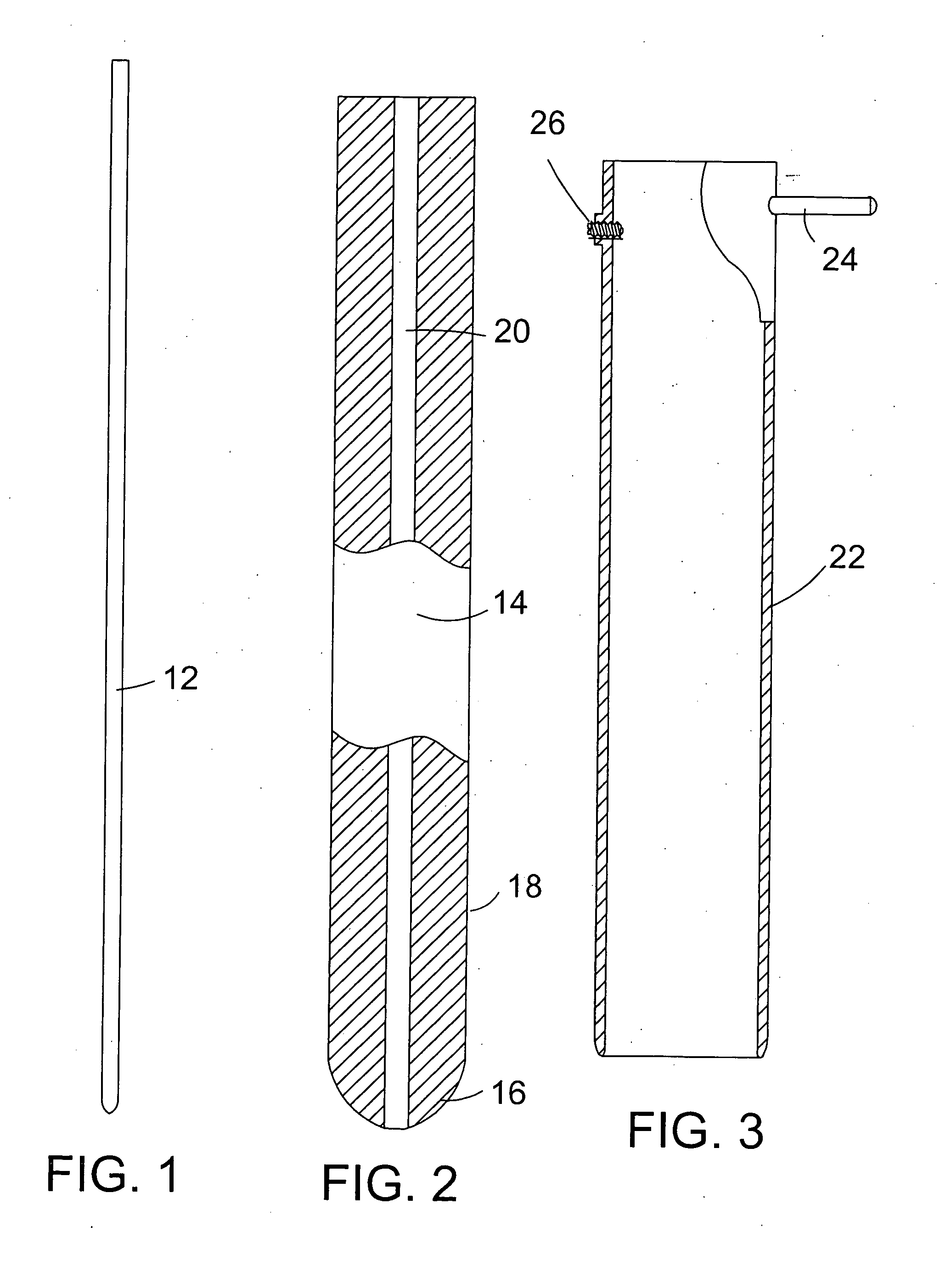Endoscopic balloon tissue dissector and retractor
a tissue dissection and endoscopic technology, applied in the field of surgery, can solve problems such as the difficulty of locating and gaining access to internal organs or structures, the difficulty of visualizing adhesions, and the difficulty of anterior and anterolateral access
- Summary
- Abstract
- Description
- Claims
- Application Information
AI Technical Summary
Benefits of technology
Problems solved by technology
Method used
Image
Examples
Embodiment Construction
[0031]FIG. 1 shows a guide wire 12, which is typically inserted through an incision in a patient's skin and advanced toward the site at which surgery is to be performed. For example, in the case of spinal surgery performed using a posterior or posterolateral approach, the guide wire can be inserted through the patient's skin, using fluoroscopic guidance to avoid tissue damage. With the guide wire 12 in place, an obturator 14, as shown in FIG. 2, is passed over the guide wire. The obturator is elongated, has a blunt tip 16, a preferably circular, cylindrical exterior wall 18, and a centrally located longitudinal channel 20 for receiving the guide wire 12. As an alternative, a solid obturator can be used without a guide wire, especially in cases where the depth to which the obturator is inserted is small.
[0032]With the obturator 14 in place, a cannula 22, as shown in FIG. 3 can be passed over the exterior of the obturator. The cannula can be manipulated by a handle 24, which can also ...
PUM
 Login to View More
Login to View More Abstract
Description
Claims
Application Information
 Login to View More
Login to View More - R&D
- Intellectual Property
- Life Sciences
- Materials
- Tech Scout
- Unparalleled Data Quality
- Higher Quality Content
- 60% Fewer Hallucinations
Browse by: Latest US Patents, China's latest patents, Technical Efficacy Thesaurus, Application Domain, Technology Topic, Popular Technical Reports.
© 2025 PatSnap. All rights reserved.Legal|Privacy policy|Modern Slavery Act Transparency Statement|Sitemap|About US| Contact US: help@patsnap.com



